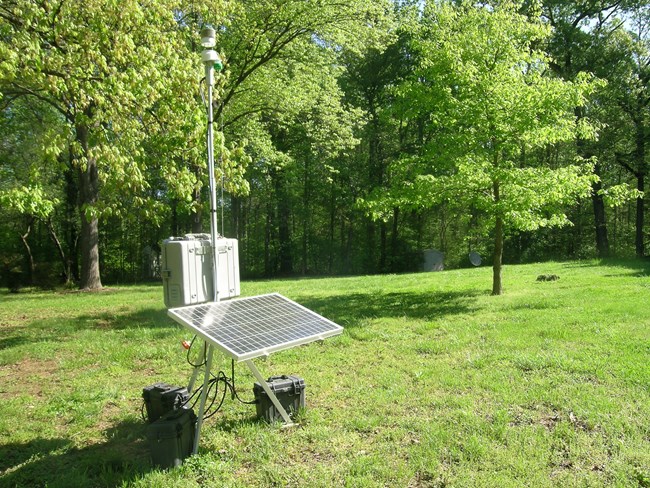
NPS Photo
In 1781 Nathanael Greene, commanding General of the Continental Army's Southern Department, was defeated at Guilford Courthouse by the British General Lord Cornwallis. Although Greene's army suffered defeat, his losses were slight, whereas Cornwallis suffered overwhelming losses, a situation that greatly hastened the end of the Revolutionary War. Guilford Courthouse National Military Park's 243-acre site preserves the battlefields and commemorates the battle with 28 monuments. At the time of the battle, this area was predominantly under cultivation. Today, the park contains mowed fields and flat upland woods of mixed pine and hardwoods, particularly oak species.
The Cumberland Piedmont Network I&M program has provided this park with a vegetation community classification and map, a wetlands inventory, and updated vascular plant and vertebrate species lists. During the vegetation community classification work, 11 distinct associations were documented and mapped, including an interesting small-stream sweetgum forest.
The network monitoring program at this park includes four vital signs that involve repeated visits to established sites, following procedures established by each monitoring protocol. These four vital signs are: forest vegetation communities, invasive species early detection, ozone/foliar injury, and water quality. Water quality monitoring began in 2004 and continues on a quarterly schedule every-other-year (even years) at three sites. Forest monitoring began in 2011–2012 with the establishment of 16 long-term monitoring plots. Additional plots will be established in upcoming years, followed by a five-year revisit schedule, occurring in early June. Ozone levels and foliar injury are assessed on-site every six years, beginning in 2012. The Invasive Species Early Detection protocol was completed in 2012 and will be used by field crews to monitor for priority exotics during their scheduled field work.
Park managers are using inventory and monitoring data to create resource stewardship strategies for achieving desired future conditions. The links to inventory and monitoring reports are provided on this page.
For more Information contact:
Steve Thomas, Network Program Manager, CUPN offices at Mammoth Cave NP
Select a Park:
Select a Species Category (optional):
Visit NPSpecies for more comprehensive information and advanced search capability. Have a suggestion or comment on this list? Let us know.
Last updated: January 12, 2021
